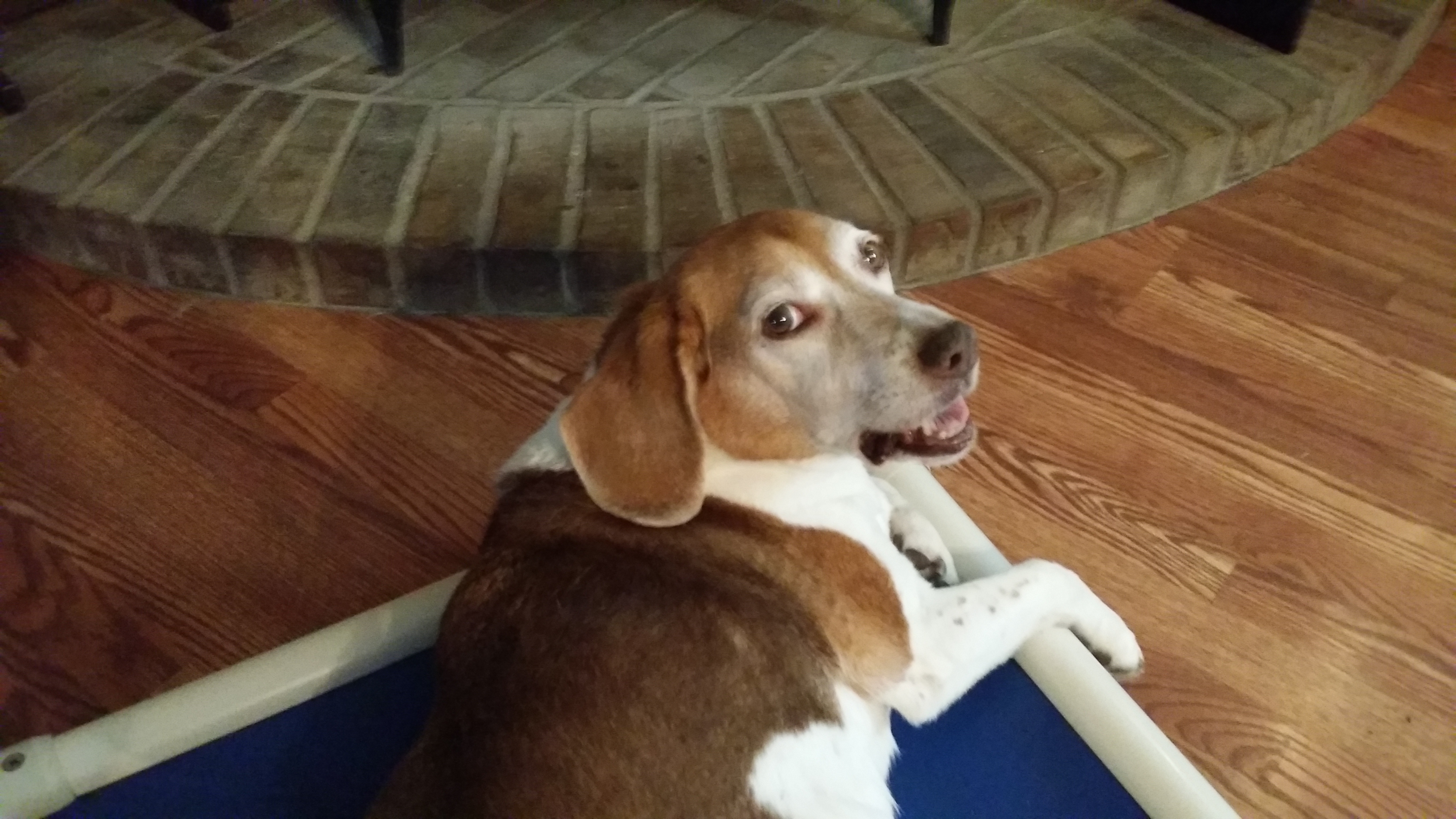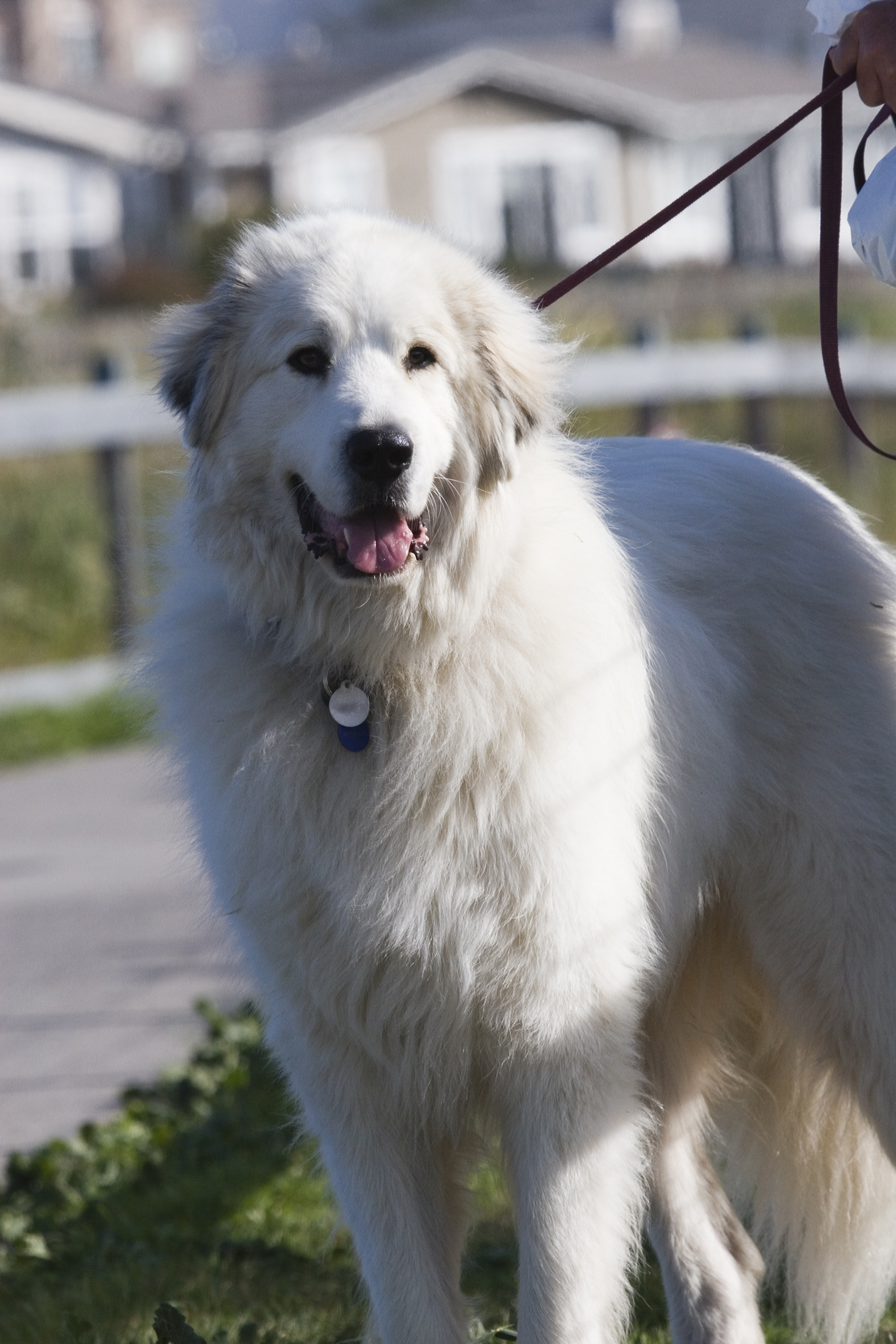Sooo true!!! |
All posts by Matthew
Vote for GracieLand Hound Dog Hotel!!Vote for GracieLand Hound Dog Hotel and you could win!! Visit tulsapeople.com and click on A-list, click on services and scroll to pet boarding and write in GracieLand Hound Dog Hotel. #tulsapeoplemagazine #tulsapeople #tulsa #tulsaoklahoma #owasso #skiatook #collinsville #sperry #oklahoma #weloveGracieland #dogsareawesome |
Everything you wanted to know about Beagles
Country of Origin: Great Britain History: Beagle-type dogs have existed for centuries, but the breed as we know it today was developed in Great Britain about 150 years ago. It has been one of the most popular breeds in North America for more than a quarter century. Physical Description: This is a small, lean dog that is slightly longer than it is tall. It has a long skull and square muzzle. It has large, brown or hazel eyes and a black nose. The drop ears are long and broad and the naturally short tail is set high. The short, hard coat is of any hound color. Height: 10 to 15 inches Weight: 20 to 30 pounds Temperament: This is a good-natured but independent-minded dog. It is outgoing and friendly and gets along well with children and other animals as long as it is socialized. It will pursue scent. Activity Level: Moderate Best Owner: This breed does well with an active family and is adaptable to most living situations, country or city. Special Needs: Fenced yard, leashed, socialization, training Possible Health Concerns: Cleft palate, demodectic mange, dwarfism, epilepsy, eye problems, hip dysplasia, hypothyroidism, intervertebral disc disease, luxating patellas, reproductive disorders Mehus-Roe – The Original Dog Bible Looking for Tulsa dog boarding? Give GracieLand Hound Dog Hotel a call! |
Everything you wanted to know about Golden RetrieversFor holiday dog boarding in Tulsa and Owasso give GracieLand Hound Dog Hotel a call.
Country of Origin: Great Britain History: The golden retriever was developed in the late nineteenth century from a cross of flat- and wavy-coated retrievers, tweed water spaniels, and red setters. It was bred by British aristocrats as a retriever and companion. The golden retriever is one of the most popular companion dogs, but is also used for a variety of work, including hunting, search and rescue, and assistance work. Physical Description: The golden retriever is a medium to large-size, athletic dog. It has a broad head with small drop ears, brown eyes, and a black or brownish black nose. The double coat has a soft, dense undercoat and a thick, straight or wavy outer coat in various shades of gold. There is a ruff around the neck and feathering at the legs, chest, belly, and tail. The coat is shortest at the head, ears, paws, and front of legs. Height: 21.5 to 24 inches Weight: 55 to 75 pounds Temperament: The golden retriever is very outgoing, friendly, playful, and even-tempered. It gets along with almost everyone, including children and other dogs. Activity Level: Moderate to high Best Owner: It does best with an active family in a suburban or rural home. Special Needs: Exercise, grooming Possible Health Concerns: Cataracts, ectropion, entropion, heart disease, hip dysplasia, PRA, cancer Mehus-Roe – The Original Dog Bible
|
Everything you wanted to know about Chihuahuas
When you’re in need of dog boarding in Tulsa, look no further than GracieLand Hound Dog Hotel Country of Origin: Mexico History: The history of the Chihuahua is vague. It is known that both the Toltec and Aztec cultures kept dogs, including a small breed called the Techichi, but it is uncertain whether these dogs were the ancestors of the Chihuahua. Some fanciers believe it is a descendant of dogs introduced by Chinese or Spanish explorers. It was first seen by North Americans in the mid-nineteenth century and brought to the U.S. shortly thereafter. Physical Description: The Chihuahua is a very small dog that is slightly longer than it is tall. The skull is large and rounded, sometimes described as an apple head. The muzzle is short and slightly pointed and the eyes are large and full. The ears are large and erect with the tips pointing slightly outward. The tail is natural and moderately long, carried erect, horizontally, or in a loop over the back. There are two coat types: longhaired and smooth. The longhaired type is soft, flat or slightly curly, usually with an undercoat. A large ruff on the neck and feathering on the tail, feet, and legs is highly desirable. The smooth variety has soft, glossy, straight hair. Any color is permitted; the coat can be solid, marked, or splashed. Common colors are red, sable, fawn, black and tan, tricolor, and brindle. Height: 6 to 9 inches Weight: 2 to 6 pounds Temperament: The Chihuahua is an alert, sensitive dog. It tends to dislike dogs of other breeds and requires socialization to be comfortable with strangers and children. Activity Level: Low Best Owner: The Chihuahua makes an excellent apartment dog and companion for an elderly or sedentary adult. Special Needs: Socialization, supervision with children and other animals Possible Health Concerns: collapsed trachea, heart problems, hydrocephalic, hypoglycemia, luxating patellas. Mehus-Roe – The Original Dog Bible
|
Everything you wanted to know about Great Pyrenees
When you’re in need of Tulsa dog boarding, look no further than GracieLand Hound Dog Hotel. Country of Origin: France History: The Great Pyrenees was developed as a flock guardian in the Pyrenees Mountains. It is believed to be related to the other flock guardians from Asia and Europe, including the akbash and Maremma sheepdogs. In the seventeenth century, it became a popular companion of French nobility. The breed was first brought to the U.S. in 1824. Physical Description: The Great Pyreness is a large, powerful dog that is slightly longer than it is tall. The wedge-shaped head has almond-shaped, dark brown eyes and a black nose and lips. The ears are small, V-shaped, and drop. The long, well-plumed tail is carried low or over the back. There is a profuse, medium-length coat that is white or white with badger, gray, or tan markings. Height: 25 to 32 inches Weight: 90 to 125 pounds Temperament: This is a stable, loyal, and confident breed, affectionate and gentle with its family but protective and territorial. It tends to be somewhat nocturnal, resting during the day and guarding at night. Activity Level: Moderate Best Owner: This breed does well with a family in a rural or suburban home. Special Needs: Fenced yard, leashed, training, socialization. Possible Health Concerns: Bloat, entropion, hip dysplasia, luxating patellas Mehus-Roe – The Original Dog Bible |
Book now for the Thanksgiving and Christmas holidays
Just a quick reminder. We still have rooms available for the Thanksgiving and Christmas holidays, but they will fill up fast. Board your dog with us to keep your furry kiddos safe and stress free while you travel during the holidays! Happy Holidays from GracieLand Hound Dog Hotel |
Everything you wanted to know about Yorkshire Terriers
Country of Origin: Great Britain History: The “Yorkie” was originally bred to control rats in cotton mills and mines in Yorkshire, England. It was popular among the working class, especially weavers. Later, it became a fashionable pet during the Victorian age. Originally called a broken-haired Scotch terrier, the breed was renamed the Yorkshire terrier by 1870. It is a descendant of the Waterside terrier, Old English black-and-tan terrier, rough-coated English terrier, paisley terrier, and Clydesdale terrier. It first came to the U.S. in the 1870s. Physical Description: The Yorkie is a very small, well-balanced dog with square proportions and a high head carriage. Its skull is small and flat; the muzzle is tapered with a small, black, button nose. The naturally erect ears are small and V-shaped. The tail is docked to medium length and carried slightly higher than the back. The distinctive coat is long, silky, and glossy, parted down the center of the back and hanging straight to the floor. The long hair on the head is parted or tied into a bow. The hair on the muzzle is long and blends into the chest hair. Puppies are born black and tan but by about two years old develop their adult steel blue and tan coloring. Height: 7 to 9 inches Weight: 3 to 7 pounds Temperament: The scrappy Yorkie is a true terrier. Despite its small size, it is courageous and assertive. It tends to get along well with most animals and children, but can become demanding and nippy if not socialized and trained. Activity Level: Moderate Best Owner: This is an adaptable dog that does well in a city or suburban home. It makes a good apartment dog. Special Needs: Dental care, grooming, socialization, supervision with children and larger animals, training Possible Health Concerns: Dental problems, hypoglycemia, Legg-Perthes disease, liver shunt, luxating patellas resources the original dog bible – Mehus-Roe
|
Everything you wanted to know about Labrador Retriever’s
Country of Origin: Newfoundland (Canada) History: The Labrador Retriever was bred as a hunter and water retriever, the Lab was developed from Saint John’s Newfoundland’s and other gun dogs in the early nineteenth century. It was a distinct breed by the mid-nineteenth century. The Labrador retriever is the most popular companion dog in the U.S. and still is used for hunting, as well as a number of other jobs, including search and rescue, detection, and service work. Physical Description: Labs are a medium to large-size, muscular dog. It has a broad head with a black or brown nose (black on black and yellow Labs, brown on chocolate Labs); brown or hazel eyes; and short, triangular drop ears. The otter tail is long and thick. The double coat has a short, dense undercoat and short, straight, water-resistant outer coat in black, yellow, or chocolate. There may be a white spot on the chest. Height: 21.5 to 24.5 inches Weight: 55 to 80+ pounds Temperament: The Labrador retriever is enthusiastic, social, and biddable. It is even-tempered and friendly with almost everyone, including children and other dogs. It loves the water and carrying objects in its mouth. Activity Level: High Best Owner: It does well with an active family in a rural or suburban environment but canadapt to city life with sufficient exercise. Special Needs: Exercise, training Possible Health Concerns: Arthritis, hip dysplasia, PRA
References the original dog bible, Mehus-Roe |
New Blog Series!!Hello from GracieLand Hound Dog Hotel. We are not just about dog boarding at GracieLand, we also want to inform and educate which is why we are prepping for a new blog series entitled, “Everything you wanted to know about……….” This new blog series will focus entirely on a different breed of dog each week. Starting this Friday, we will cover topics like the history of each breed, physical descriptions, health concerns, special needs, etc… We are very excited about this new blog adventure and hope that you will enjoy getting to know different breeds of dogs. If you would like to make a suggestion for a breed to focus on, or would like to have your dog’s picture featured in one of our blogs, please let us know at [email protected] Mike |










